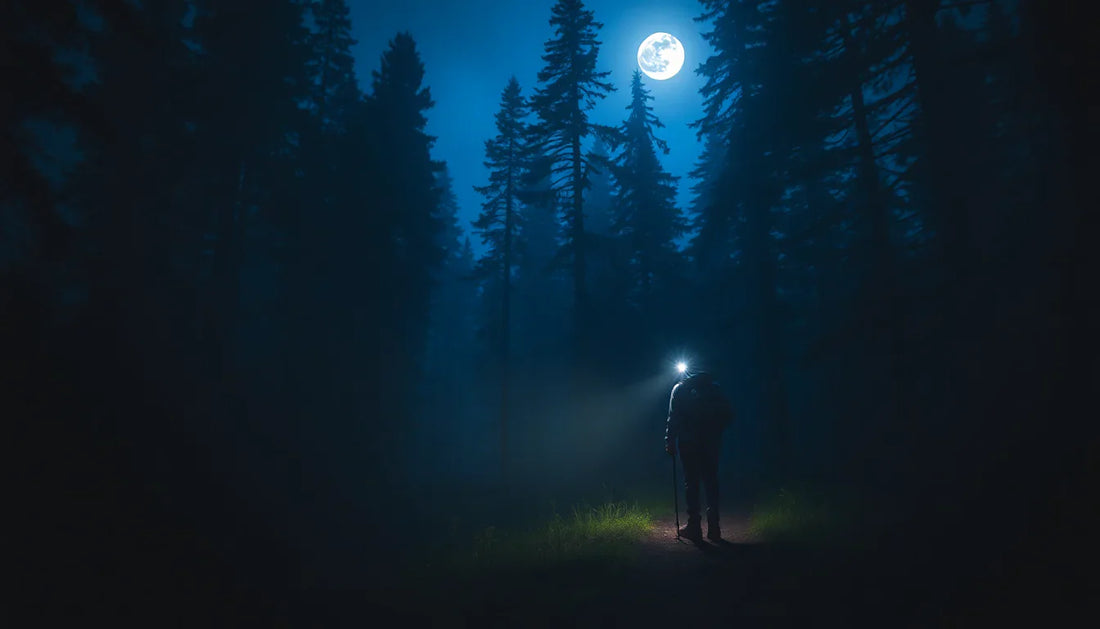
Unlocking the Magic of Night Hiking: A Guide to Exploring Trails After Dark
Share
The allure of night hiking is undeniable. As the sun dips below the horizon, the world transforms, casting a veil of mystery and wonder over the landscape. The familiar trails you've traversed a hundred times take on a new, enchanting character, inviting you to experience the great outdoors in a whole new light.
However, with the beauty of night hiking comes a unique set of challenges and considerations. Safety must be the top priority when venturing out after dark, as the risks can be amplified in the absence of daylight. That's where GlowCamp comes in - our curated collection of functional camping gear is designed to provide the comfort, mindfulness, and sense of home that make night hiking a truly transformative experience.
In this comprehensive guide, we'll explore the essential gear, preparation techniques, and safety strategies that will empower you to embrace the magic of night hiking with confidence. Whether you're a seasoned adventurer or a curious newcomer, this blog post will equip you with the knowledge and tools to navigate the trails after dark with skill and peace of mind.
Essential Gear for Night Hiking
The right gear can make all the difference when it comes to night hiking. At the heart of your kit, a reliable headlamp or flashlight is an absolute must-have. Look for models with adjustable brightness settings, long-lasting battery life, and features like red-light modes to preserve your night vision. Pair your lighting with reflective clothing and accessories to enhance your visibility to others on the trail.
Navigation tools are also crucial for night hiking. In addition to a map and compass, consider investing in a GPS device or smartphone app with offline capabilities. These can help you stay on track and avoid getting lost, even in the darkest of conditions.
Preparation and Planning
Proper preparation is key to a safe and enjoyable night hike. Start by carefully selecting your route, taking into account the terrain, weather conditions, and any potential hazards. Consider the group size and experience level, as hiking in a group can provide an added layer of safety and camaraderie.
Before setting out, review the forecast and be mindful of factors like moonlight, cloud cover, and precipitation, as they can significantly impact visibility and trail conditions. Pack extra layers, snacks, and emergency supplies to ensure you're equipped for any unexpected challenges.
Safety Techniques
Communication is paramount when hiking at night. Establish a plan for regular check-ins with loved ones, and consider bringing a satellite communication device or personal locator beacon in case of emergencies. Familiarize yourself with wildlife behavior and take precautions to minimize encounters, such as making noise to alert animals to your presence.
Navigating the trails in low light requires a different set of skills. Slow down your pace, stay alert, and use your senses to guide you. Pay close attention to the terrain, using your hands to feel for uneven ground or obstacles. If you encounter a challenging section, don't hesitate to use your lighting to illuminate the path ahead.
Advanced Night Hiking Tips
For the more experienced night hikers, the opportunities for exploration and discovery are endless. Embrace the tranquility of the night and take the time to gaze up at the stars, marveling at the celestial wonders above. Those with a passion for photography can capture the ethereal beauty of the landscape under the cloak of darkness, using long exposures and creative lighting techniques.
Ultimately, night hiking is a deeply personal and transformative experience. By tuning in to your senses and embracing the present moment, you can cultivate a profound sense of mindfulness and connection with the natural world. The challenges and risks are real, but with the right preparation and a spirit of adventure, the rewards of night hiking are truly unparalleled.
Mitigating Common Risks
While the allure of night hiking is undeniable, it's essential to be aware of the potential risks and take proactive steps to mitigate them. Visibility challenges can be addressed through the use of high-quality lighting and reflective gear, while terrain difficulties require a slower pace and heightened awareness of your surroundings.
In the event of an emergency, having a well-stocked first-aid kit and a plan for communication and evacuation can make all the difference. Familiarize yourself with local emergency protocols and ensure that your group is prepared to respond quickly and effectively.
Conclusion
Night hiking is a transformative experience that allows you to connect with the natural world in a profound and intimate way. By embracing the challenges, preparing thoroughly, and prioritizing safety, you can unlock the magic of exploring the trails after dark.
At GlowCamp, we're dedicated to providing the gear and guidance you need to make your night hiking adventures safe, comfortable, and truly unforgettable. So lace up your boots, grab your headlamp, and get ready to embark on a journey that will leave you in awe of the wonders that await under the cloak of darkness.
